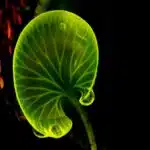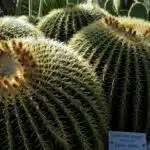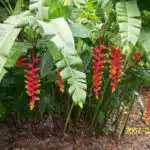Gardening enthusiasts and plant lovers understand the importance of having a suitable environment for their green friends. One such requirement is a proper drainage system that ensures plants do not sit in stagnant water, which can lead to root rot and other issues. Pebble trays are an effective solution that helps create a suitable environment for indoor plants. In this article, we will discuss how to make a pebble tray for plants and its benefits for your beloved flora.
A pebble tray is a shallow dish filled with pebbles and water. It works by creating humidity around the plant, which is especially helpful during dry winter months when indoor heating systems can create a dry atmosphere in homes. Using a pebble tray also helps prevent damage to furniture caused by water leakage from plant pots while providing an aesthetic touch to your indoor garden. In the following sections, we will guide you through the steps involved in making your very own DIY pebble tray and how it can enhance your plant care routine.
Understanding The Importance Of Drainage For Indoor Plants
Indoor plants are excellent additions to any home or office space. They bring life, color, and a sense of calmness to our surroundings. However, providing the right care for them can be tricky. One of the most important aspects of plant care is proper watering. Overwatering and underwatering can lead to stunted growth or even death. Therefore, it’s essential to choose the right soil mix that will provide adequate drainage.
The importance of proper watering cannot be overstated when it comes to indoor plants. Water is an essential element that helps plants grow and thrive. However, too much water can lead to root rot and other diseases, while too little water can cause dehydration and wilting. To avoid such problems, you need to choose the right soil mix for your plants. A well-draining soil mix will prevent water from accumulating around the roots, allowing air to circulate freely.
Choosing the right soil mix is crucial because it affects how much water your plant needs and how often you should water it. The ideal soil mix should be porous and able to retain moisture without becoming waterlogged. It should have a balanced ratio of organic matter and inorganic components like sand or perlite to ensure adequate drainage. With the right soil mix in place, you’ll be able to provide your indoor plants with just enough water without drowning them. This way, they’ll grow healthy and strong for years to come.
Transition: Now that we understand the importance of proper watering and choosing the right soil mix let’s explore some benefits of using a pebble tray for your plants.
Benefits Of Using A Pebble Tray For Your Plants
Using a pebble tray is a beneficial way to help care for your plants, as it aids in moisture retention, drainage, and air circulation. The pebble tray is constructed by filling a tray with pebbles and filling it with water. The water should fill the tray to just below the top of the pebbles. The water will be absorbed by the pebbles, keeping the soil in the pot moist and allowing for the roots to take up the water as needed. Excess water will be able to drain off the pebbles and out of the tray, ensuring that the plant roots don’t become oversaturated. The air circulation created by the pebbles allows for oxygen to reach the plant’s root system, helping to keep it healthy.
Moisture Retention
As a gardener, you might have heard about the benefits of using a pebble tray for your plants. Pebble trays are an attractive and practical way to improve humidity levels around your plants. One of the main advantages of using a pebble tray is that it helps prevent waterlogging in your plant’s roots.
One of the most significant benefits of using a pebble tray is that it can help increase humidity levels around your plants. Houseplants thrive in environments with higher humidity levels, and placing them on top of a pebble tray filled with water can provide just that. As the water evaporates from the tray, it creates moisture in the air around your plant, promoting healthier growth and preventing dryness.
Another essential benefit of using a pebble tray is that it helps prevent waterlogging in your plant’s roots. Waterlogging occurs when plants sit in standing water for an extended period, which can lead to root rot and other problems. By elevating your pots on top of a layer of pebbles above the waterline, you allow excess water to drain away from the roots while still providing enough moisture for healthy growth.
In conclusion, using a pebble tray for your plants has many benefits, including increasing humidity levels and preventing waterlogging. By incorporating this simple yet effective technique into your plant care routine, you can ensure that your plants thrive in their environment and stay healthy over time.
Drainage
Another essential aspect of plant care is proper drainage, which is where a DIY pebble tray can come in handy. Without adequate drainage, excess water can accumulate in the soil, leading to root rot and other problems. By placing your plants on top of a layer of pebbles in a tray, you can ensure that excess water drains away from the roots, promoting healthy growth.
In addition to preventing waterlogging and promoting proper drainage, using a pebble tray also has aesthetic benefits. The tray can add an attractive touch to your indoor garden while also serving as a practical solution for maintaining humidity levels. With this simple and affordable plant care tip, you can create a beautiful and healthy environment for your plants.
In summary, incorporating a DIY pebble tray into your plant care routine can have multiple benefits beyond just increasing humidity levels. It can also promote proper drainage to prevent root rot and enhance the visual appeal of your indoor garden. So why not give it a try? Your plants will thank you for it!
Air Circulation
Proper plant care involves much more than just watering and fertilizing your plants. One crucial aspect that often goes overlooked is air circulation. Adequate ventilation can have several benefits for your plants, including improving air quality and preventing the buildup of harmful gases like carbon dioxide.
One way to enhance air circulation in your indoor garden is by using a DIY pebble tray. By placing your plants on top of a layer of pebbles in a tray, you can create an ideal environment for healthy growth while also promoting proper airflow. The tray can help prevent stagnant air from accumulating around the roots, which can lead to problems like mold and mildew.
In addition to promoting healthy air circulation, using a pebble tray also has aesthetic benefits. The tray can add an attractive touch to your indoor garden while serving as a practical solution for maintaining humidity levels and improving overall plant health. With this simple and affordable plant care tip, you can create a beautiful and healthy environment for your beloved plants.
Choosing The Right Tray And Pebbles
As we have discussed in the previous section, using a pebble tray can greatly benefit your plants. However, choosing the right tray and pebbles is just as important. When selecting a tray, consider the size of your plant’s pot. The tray should be at least an inch wider than the pot for small to medium-sized plants and two inches wider for larger plants. This will ensure that any excess water from watering or misting will be caught by the tray.
Additionally, when selecting pebbles for your tray, it is important to choose the right size. Pebbles that are too small may not allow enough air circulation around the plant while those that are too large may not provide enough surface area for water to evaporate from. A good rule of thumb is to choose pebbles that are about 1/4 to 1/2 inch in diameter.
Once you have determined the appropriate tray size and selected the right size of pebbles, it’s time to gather the necessary materials. You will need a shallow tray, preferably with a lip around its edges. You will also need enough pebbles to fill the bottom of the tray with one layer of stones about an inch deep. Be sure to thoroughly wash and dry both the tray and pebbles before use to avoid introducing any harmful bacteria or fungi into your plant’s environment.
Gathering The Necessary Materials
Ah, the joys of creating a DIY pebble tray for your beloved plants! But before we dive into the step-by-step guide on how to make one, let’s first gather all the necessary materials. Sure, you could just buy a bag of pebbles from your local hardware store, but where’s the fun in that? Plus, sourcing materials sustainably is always a plus for us environmentally-conscious plant parents.
First off, let’s talk about the star of this show: the pebbles. While they do offer great drainage and aesthetic appeal to your tray, there are alternatives if you can’t get your hands on any or don’t want to use them. You can opt for small stones, gravel, sand or even broken pieces of terracotta pots. Just make sure they’re clean and won’t contaminate your soil or harm your plants in any way.
Next up is the actual tray itself. You have many options here as well depending on what you have available. A shallow dish like a saucer or pie tin will do just fine, but if you want something more aesthetically pleasing (and who doesn’t?), you can go for ceramic or glass dishes that match your decor style. And voila! You’ve got yourself some DIY pebble tray materials ready to go – now onto the fun part!
Step-By-Step Guide: Making A Pebble Tray For Your Plants
After gathering all the necessary materials, it’s time to move on to the next step of making a pebble tray for your plants. But before we start, let’s talk about some decorative options that you can use to make your pebble tray stand out. You can choose different colored pebbles or stones to add an extra pop of color and texture. Alternatively, you can add moss or even small figurines to create a unique look.
If you don’t have access to pebbles or stones, don’t worry! There are alternative materials that you can use instead. For instance, you can use glass beads or marbles in place of pebbles. These options come in various colors and sizes, so you have plenty of choices to pick from. Additionally, if you’re feeling creative, you can try using seashells or even recycled materials like bottle caps.
Now that we’ve discussed some decorative options and alternative materials, it’s time to move on to the first step: preparation. Start by selecting a shallow tray that is large enough to fit your plant pot(s). Make sure that the tray has drainage holes at the bottom; otherwise, your plants may become waterlogged. Clean the tray thoroughly with soap and water and let it dry completely before moving on to the next step.
Step 1: Preparation
Choosing the right container for your pebble tray is crucial to ensure proper drainage and to prevent water from accumulating in the tray. It’s best to use a shallow dish or tray with no holes, which will allow the water to evaporate more easily. You can choose any shape or size that suits your needs, but keep in mind that larger trays may require more pebbles to fill.
Once you have selected your container, it’s time to decorate your pebble tray with natural elements. This is where you can get creative and add some personal touches to your tray. Some ideas include arranging small rocks or shells around the edges of the tray or placing small plants or succulents on top of the pebbles. You could even add a few drops of essential oils to the water in your tray for a natural fragrance.
Decorating your pebble tray not only adds aesthetic value but also serves as an opportunity for self-expression. The addition of these natural elements can create a calming atmosphere and promote relaxation, perfect for those who want to incorporate some mindfulness into their daily routine. With these steps complete, it’s time to move on to filling the tray with pebbles.
Transition: Now that we’ve chosen our container and added some natural elements, let’s move on to filling our pebble tray with stones.
Step 2: Filling The Tray With Pebbles
After preparing the tray, the next step is to fill it with pebbles. As the saying goes, “laying a firm foundation is key to success,” and filling the tray with pebbles is an essential foundation for healthy plant growth. The size of the pebbles used will depend on the specific plant’s needs. Larger plants should be paired with larger pebbles, while smaller plants are best complemented by smaller pebbles.
When selecting pebbles for your tray, color should also be taken into consideration. Neutral colors such as white or beige can make a statement when paired with colorful plants, while darker shades like black and grey can create a more subtle effect. It’s important to note that darker-colored stones absorb more heat than lighter ones, which can impact plant growth in hot climates.
To ensure optimal plant health, use these tips when filling your tray:
- Choose pebble sizes that correspond to your plant’s size
- Consider using neutral or dark colored stones depending on your desired aesthetic
- Ensure that there is enough space between the top of the pebbles and the bottom of your planter
With the tray filled with carefully selected pebbles, it’s time to move onto the next step: adding water to create a humid environment for our plants.
Step 3: Adding Water To The Tray
Adding water to the pebble tray is an important step in creating a healthy environment for your plants. The benefits of humidity cannot be overstated, as it can help prevent root rot and keep your plants thriving. Simply pour enough water into the tray so that it covers the pebbles but does not touch the bottom of your plant’s pot.
Alternative watering methods, such as misting or bottom watering, may also be used in conjunction with the pebble tray method. Misting involves spraying water onto the leaves and stems of your plant using a spray bottle. This method can help increase humidity levels without overwatering your plant’s soil. Bottom watering, on the other hand, involves filling a container with water and placing your plant’s pot inside for a certain amount of time until the soil is moistened.
Remember to check the water level in your pebble tray regularly to ensure that it does not dry out completely. Refill as needed to maintain proper humidity levels for your plants. With this simple addition to your plant care routine, you can create a healthier environment for your beloved greenery.
To continue caring for your potted plants on the tray, you will need to place them strategically on top of the pebbles to ensure they get adequate moisture without sitting in standing water.
Step 4: Placing Your Potted Plants On The Tray
When placing potted plants on a pebble tray, it is important to ensure the pot is the right size for the tray. Too small of a pot may look out of place, while too large of a pot can appear overcrowded. Care should be taken when arranging the plants on the tray to ensure the overall aesthetic look is pleasing. Consider the size, color, and texture of each pot and its position relative to the other pots to achieve the desired look.
Choosing The Right Size Pot
When it comes to placing your potted plants on a pebble tray, choosing the right size pot is crucial. The size of the pot will determine how many plants you can fit on the tray and how much space they will have to grow. When selecting pots, consider the type of plant and its growth habits, as well as the overall aesthetic you are trying to achieve.
Choosing pot material is another important factor to consider when selecting pots for your pebble tray. Clay pots are a popular choice due to their porous nature, which allows for good drainage and air flow. However, plastic or metal pots may be more suitable if you want something lightweight and easy to move around. Ultimately, the choice of pot material depends on your personal preferences and the needs of your plants.
Before placing your potted plants on the tray, make sure that they are all evenly spaced apart and have enough room to grow without overcrowding each other. Consider using a mix of tall and short plants to create visual interest and add depth to your display. With these tips in mind, you can create a beautiful and functional pebble tray that will enhance the health and beauty of your potted plants.
Arranging For An Aesthetic Look
Now that you have selected the appropriate pot sizes and materials for your plants, the next step is to arrange them in a way that maximizes their aesthetic appeal. A well-designed pebble tray not only enhances the beauty of your plants but also creates a harmonious display that complements your interior design.
To achieve this, consider incorporating creative pebble arrangement ideas that bring out the best in your potted plants. For example, you can use different colored pebbles or stones to create contrast and texture, or arrange them in patterns that draw the eye towards specific plants. You can also experiment with different tray shapes and sizes to add dimension and visual interest to your display.
When arranging your potted plants on the tray, keep in mind their growth habits and space requirements. Be sure to leave enough room between each plant so they can grow without crowding each other. Consider grouping tall and short plants together to create a balanced look, or clustering similar types of plants for a cohesive display. With these tips in mind, you can create a beautiful and functional pebble tray that brings joy and inspiration to those who see it.
Tips For Maintaining Your Pebble Tray
According to a recent study, maintaining the right humidity levels in your home can help decrease the risk of respiratory illnesses. This is why incorporating a pebble tray into your plant care routine can be a great way to not only keep your plants healthy, but also improve the air quality in your home. However, there are certain things you need to keep in mind when using a pebble tray.
Firstly, watering frequency is crucial when it comes to using a pebble tray. Since the water in the tray provides moisture for the plants, it’s important to make sure that it doesn’t completely dry out. On the other hand, you don’t want to overwater your plants either as this can lead to root rot and other issues. Depending on the type of plant you have and the environment it’s in, you may need to adjust your watering schedule accordingly.
Secondly, choosing the right plants for your pebble tray is also important. While most plants benefit from increased humidity levels, some may not thrive under these conditions. It’s important to research which types of plants will do well in a high humidity environment before adding them to your pebble tray.
In order to ensure that your pebble tray is functioning properly and providing enough moisture for your plants, monitoring the water level is key. As mentioned earlier, you don’t want the tray to completely dry out but at the same time you don’t want standing water either. A good rule of thumb is to add water whenever you notice that about half an inch has evaporated from the tray. By keeping these tips in mind and monitoring your pebble tray regularly, you can create an ideal environment for both yourself and your beloved plants.
Monitoring The Water Level
Measuring water is an essential step in maintaining the health of your plants. The pebble tray should always have enough water to provide adequate humidity for the plants. However, too much water can lead to root rot and other issues.
To measure the water level in your pebble tray, use a simple tool such as a ruler or measuring tape. Gently lift the plant pot and measure the distance between the bottom of the pot and the surface of the water. This will give you an accurate reading of how much water is in your tray.
Adjusting water levels is easy once you know how much water your plants need. If there is not enough water, add more until it reaches the desired level. If there is too much, remove some using a turkey baster or other suction device. Maintaining consistent water levels will ensure that your plants receive optimal care and thrive in their environment.
As you continue to care for your plants, it’s important to keep their surroundings clean. In the next section, we’ll discuss how to properly clean your pebble tray to prevent any buildup of mold or bacteria that could harm your plants.
Cleaning Your Tray
A pebble tray is a great addition to any plant lover’s arsenal. But with great beauty comes great responsibility – proper maintenance of your tray is crucial to keep it functioning optimally. Cleaning techniques are essential in ensuring that your pebble tray remains clean and free of debris.
To start cleaning your pebble tray, remove the rocks and dispose of any organic matter that may have accumulated on top of them. Rinse the rocks thoroughly with water and allow them to dry completely before placing them back into the tray. If you notice algae or mold growth, mix equal parts water and vinegar in a spray bottle and apply to the affected areas. Wipe clean with a cloth or paper towel.
Proper maintenance of your pebble tray will ensure its longevity and effectiveness. It’s recommended to clean your tray at least once a month, but if you notice excessive buildup or discoloration, consider cleaning it more frequently. Remember that prevention is key – avoid overwatering your plants as excess moisture can accumulate in the tray and lead to mold growth. With these tips, your pebble tray will be looking fresh and functioning properly for years to come.
As important as proper maintenance is for a healthy pebble tray, using a humidifier in conjunction with your pebble tray can take things to the next level. In the next section, we’ll discuss how adding humidity through a humidifier can benefit both your plants and yourself as well as how to use one effectively alongside your trusty pebble tray.
Using A Humidifier In Conjunction With Your Pebble Tray
Humidity is essential for the growth and survival of plants, especially those that thrive in tropical environments. A pebble tray is an effective way to increase humidity levels around plants, but it may not be enough on its own. Using a humidifier in conjunction with your pebble tray can provide additional benefits to your plants.
One of the primary benefits of humidifiers is that they help prevent plant dehydration by increasing the moisture content of the air. This can improve plant health and reduce stress, which can make them more resilient to pests and diseases. Additionally, proper humidity levels can also encourage faster growth and flowering in some plant species.
Choosing the right humidifier for your indoor garden is crucial as different types of plants have varying humidity requirements. Ultrasonic humidifiers are generally recommended for indoor gardening as they produce fine mist droplets that are easily absorbed by plants. Be sure to choose a humidifier with adjustable settings so that you can control the level of humidity around your plants based on their specific needs.
Next, we will discuss common mistakes to avoid when using a pebble tray and humidifier together to ensure optimal plant growth and health.
Common Mistakes To Avoid
When making a pebble tray for plants, it is important to ensure that the tray has adequate drainage. Using the wrong potting soil can cause nutrient deficiencies and other issues in the plants, so it is important to use a soil specifically formulated for the plants being grown. Overwatering plants can cause root rot, which can be fatal in some cases, so it is important to be mindful of how much water the plants are receiving. Finally, it is important to make sure that the pebble tray is cleaned regularly to avoid the risk of bacteria, fungus, or other contaminants.
Not Allowing Enough Drainage
For any plant enthusiast, a pebble tray can be a great way to add moisture to the air and increase humidity for your plants. However, one of the most common mistakes that plant owners make is not allowing enough drainage in their pebble tray setup. This can lead to problems with water retention and ultimately harm your beloved plants.
Alternative drainage methods can be implemented to prevent this mistake from happening. One option is to use a layer of activated charcoal beneath the pebbles in your tray. This will help absorb excess water and prevent it from sitting stagnant in the tray. Another alternative is to use a plastic liner with holes punched into it, placed on top of the pebbles but under the pot. This allows for proper drainage without sacrificing the benefits of using a pebble tray.
Problems with water retention can have serious consequences for your plants, so it’s important to take measures to avoid them. By implementing alternative drainage methods like activated charcoal or plastic liners, you can ensure that your plants are receiving just the right amount of moisture while maintaining optimal health and growth. Remember – prevention is key when it comes to plant care!
Using Wrong Potting Soil
One of the common mistakes that plant owners make is using the wrong type of soil for their plants. Using the wrong soil can significantly affect the growth and wellbeing of your plants. Signs of wrong soil include poor drainage, root rot, and stunted growth.
It’s important to choose the right type of soil for your plants. Some plants require well-draining soils, while others need moist soils to thrive. Before planting, research the specific needs of your plant and choose a soil that matches those requirements. Additionally, avoid using garden soil or topsoil in potted plants as they can harden over time and restrict water flow to the roots.
Using the correct potting soil ensures that your plant receives adequate nutrients, oxygen and water to support healthy development. By understanding what types of soils work best for your specific plants, you can prevent common mistakes in plant care and keep your greenery growing strong. Remember – taking small steps like choosing the right soil can make a big difference in ensuring the health and longevity of your beloved plants!
Conclusion: Enjoying The Benefits Of Your Diy Pebble Tray
Common mistakes can easily be avoided when making a DIY pebble tray for plants. However, it is equally important to understand the benefits of such projects and creative ways to display indoor plants before starting your own.
Benefits of DIY plant projects are numerous. Firstly, they provide a fun and engaging activity that allows you to de-stress while also nurturing your creative side. Secondly, having plants around improves the air quality in your home and promotes relaxation. Finally, using a DIY pebble tray for plants also allows you to save money by not having to purchase expensive decorative planters.
Creative ways to display indoor plants are limited only by imagination. Hanging planters, vertical gardens, and terrariums are just a few examples of unique ways to showcase your greenery. Using a DIY pebble tray for plants is another great option as it provides an elegant and functional base for displaying potted plants while also promoting proper drainage.
Incorporating these ideas into your home will not only bring aesthetic value but also provide a therapeutic escape from daily stressors. Enjoying the benefits of DIY plant projects and creative displays will leave you feeling fulfilled as you care for both yourself and your beloved greenery.
Conclusion
Drainage is crucial for indoor plants to thrive, and a pebble tray can be an effective way to achieve this. A pebble tray not only provides drainage but also helps to increase humidity levels for the plants. Choosing the right tray and pebbles is essential, as well as following proper cleaning procedures.
To make a DIY pebble tray, gather materials such as a shallow tray, pebbles, and water. Fill the tray with the pebbles and add enough water to cover them partially. Place your potted plant on top of the pebbles, ensuring that it does not touch the water. Clean your tray regularly to prevent mold or algae growth.
In addition to using a pebble tray, consider incorporating a humidifier into your plant care routine. Mist your plants regularly and keep them away from drafts or air conditioning vents. Remember to avoid overwatering and ensure that your plants have proper drainage.
As gardening enthusiasts know, creating an optimal environment for indoor plants requires attention to detail and careful planning. By making a DIY pebble tray and implementing other humidity-boosting techniques, you can help your plants thrive in any climate. As the saying goes: “A green thumb is not born; it’s grown through dedication and love.” So go ahead – show some love to your indoor garden!
Image Credits
- “DSC04373 bambu sporks, trays, and pebbles” by godutchbaby (featured)





























